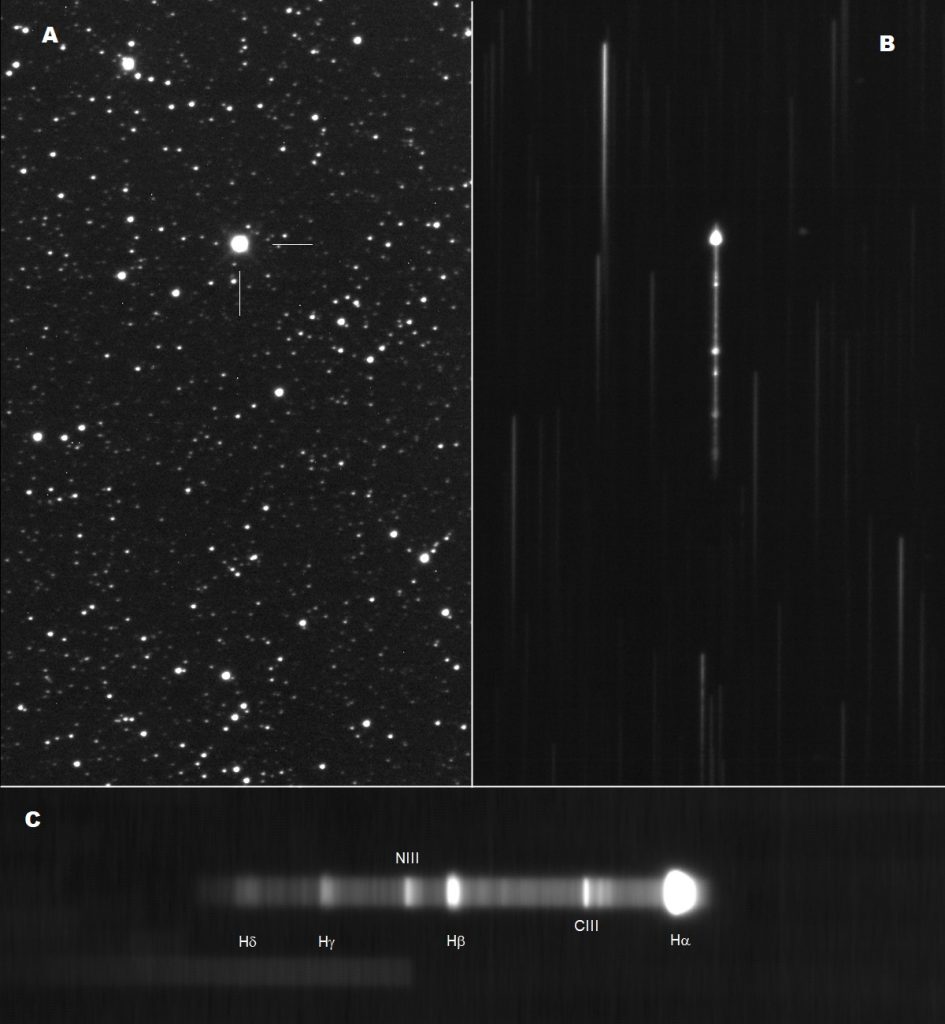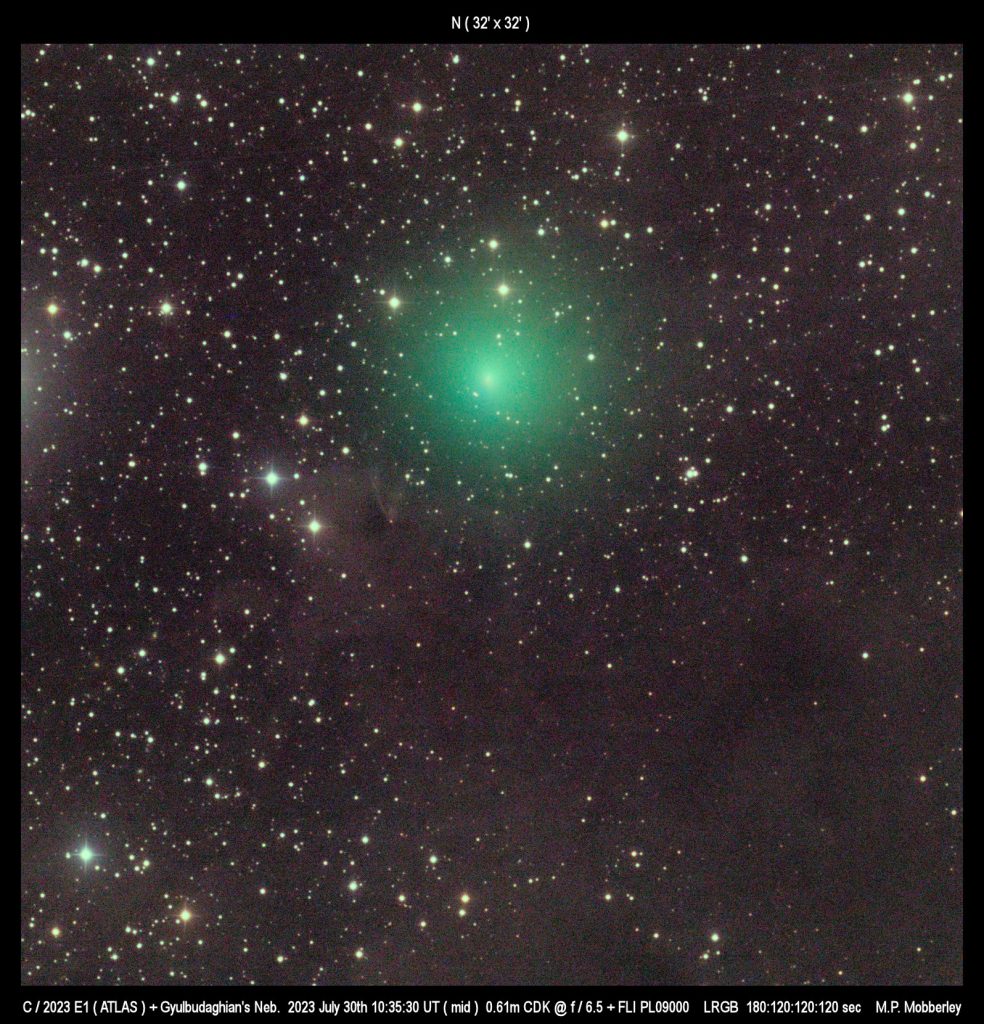2023 August 3
Deep Sky Update – July 2023
On reaching the end of July the night skies are getting very noticeably darker here at 59N. We’ve had few clear nights, though July 31st was cloudless for a while, and it was nice to see a few more stars than just Vega and Altair. And while aurorae were too faint to be seen against the ‘midnight’ Sun, there have been a couple of nice displays of Noctilucent Clouds to make up for it. I have also been working on getting a meteor camera (part of the UKMON network) up and running in time for the Perseids, and hopefully this will be fully operational soon. I’ve also had some time to update the secondary holder on my 12 inch Dob, and it too will soon be ready for some testing under the stars. Astronomical twilight ends on August 18th – so it will not be too long before there will be chances for some visual observing.
Deep Sky Zoom
This online meeting will take place on September 28th at 19:30, and will last probably no longer than 90 minutes. At the moment we have two speakers. Owen Brazell will talk about galaxy clusters for the autumn months, and David Strange will present on Barnard’s dark nebulae and the WO Redcat. If anyone else would like to give a short talk please let me know. Link details for the Zoom meeting will be circulated nearer the time.
Section Meeting 2024
I have in mind a provisional date of April 27th for the section meeting next year, but still looking for a venue and local organiser. If anyone would like to help host the meeting, perhaps with your local society, please let me know.
Planetary Nebulae Alignments
There was a fascinating paper published recently whose authors include PNe experts Quentin Parker and Albert Zijlstra (Albert has spoken at section meetings in the past, and Quentin is one of my old university buddies).
The story goes back to 2013 when one of Albert’s PhD students, Bryan Rees, noticed an alignment of PNe orientations near the galactic bulge. The latest paper provides additional evidence supporting the observations, and proposes that the alignments can only be due to magnetic fields.
You can read more about this in the Manchester University press release.
The latest paper: When the Stars Align: A 5σ Concordance of Planetary Nebulae Major Axes in the Center of Our Galaxy. Shuyu Tan, Quentin A. Parker, Albert A. Zijlstra, Andreas Ritter, and Bryan Rees
And the original paper: Alignment of the Angular Momentum Vectors of Planetary Nebulae in the Galactic Bulge. B. Rees and A. A. Zijlstra
Euclid
The Euclid satellite was launched on July 1st and by the end of the month had returned it’s first light images. These are really fascinating, and while there have been some images shown on BBC News it’s wellworth digging into the news articles posted by the Eulid Consortium itself:
July Object of Interest
Campbell’s Hydrogen Star in Cygnus was the July target. Sadly I had few observations – most likely poor weather – but many thanks to Mike Harlow who made this image and took a spectrum showing the strong hydrogen emission lines.


I also had a go at imaging it with one of iTelescope remote telescopes in Utah – and the ‘star’ does show a nice red/pink tinge.
I was also pleased to receive some visual observation reports from past days. Owen Brazell and Andrew Robertson recounted observing it:
“I was observing this object with the 22” on a night of very poor transparency but with very steady seeing and noted a very pink colour to the disk. Increasing power showed the disk was decidedly pink but with the scope being undriven I could not push it more. We then went and used Andrew Robertsons driven 60cm scope and we were able to push the power over 600x which not only showed the pink inner disk but also the outer halo was also very easy to see. No structure was seen in either the halo or inner disk. We were observing from the Haw Wood star party which is a Bortle 4/3 site but low level in Suffolk.”
And Lee MacDonald noted:
“I have twice observed this object visually with my 222mm (8 3/4-inch) Newtonian, in September 2000 and August 2007. It lies in a rich, beautiful region of the Cygnus Milky Way. On both occasions, I noted that it did not respond at all to my old-style Lumicon OIII filter. In
2007, however, I had a Lumicon H-beta filter (again old-style) and noted that it responded strongly to this filter. The nebula was barely resolved at 268x as a tiny, fuzzy disc. The H-beta filter did not increase the nebula’s size, only its contrast.
I hope these notes encourage visual observers to have a try at this unusual object. It is not a difficult target for telescopes in the 8-inch class, you just need to be sure you are in the correct field.”
In my update last month I suggested trying an OIII filter without setting any expectation. As Lee notes it does not enhance the nebula at all. However, it might be a useful way to enhance the view of the central star. A UHC or H-Beta filter may help pick out the nebula. Generally it’s worth trying out different filters on many objects to see what effect it has.
August Object of Interest
Sticking with Cygnus for August I have chosen something rather easier that everyone might enjoy, but with just one image in the Members Galleries counts as being rather under-observed. NGC 6811 is an open cluster, but is slightly unusual in that it appears to have a dark patch at its centre, which has led to its common name “The Hole in the Cluster”.
It lies north-east of Delta Cygnii and should be fairly easy to spot with binoculars or a small telescope, though a medium aperture should show it to best effect.
Deep Sky Picture of the Month
For this month I have chosen an image of Gyulbudaghian’s Variable Nebula and PV Cep which happens to have Comet 2023 E1 (ATLAS) passing over. This image was taken by Martin Mobberley using iTelescope T24 on 2023 Jul 30 – 10:35.
Thanks goes to Mike Harlow who notified this close approach, and to Martin for this splendid image.
And Finally
Proper dark skies are returning to northern locations, so lets hope some good weather arrives too so we can take advantage!
Clear skies,
Callum
| The British Astronomical Association supports amateur astronomers around the UK and the rest of the world. Find out more about the BAA or join us. |

